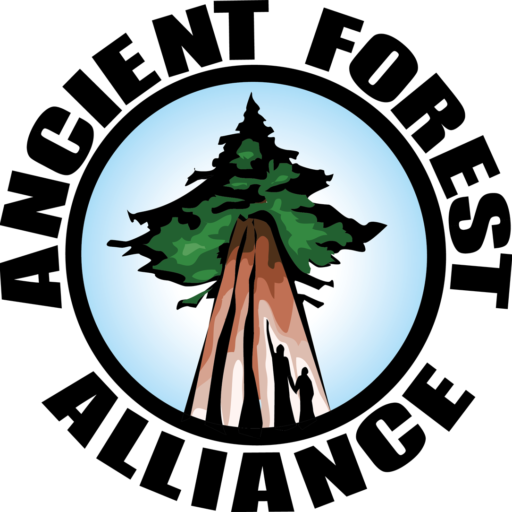East Side Games and its over one million Facebook fans weigh-in to support the Ancient Forest Alliance’s campaign to protect Echo Lake, a rare, lowland old-growth forest near Mission and the world’s largest eagle night roosting site, and to protect ancient forests across BC – challenges other BC tech companies to do the same
The campaign to protect British Columbia’s endangered old-growth forests has gained a unique and powerful new supporter: East Side Games is an independent, Vancouver-based tech company that specializes in developing online games for social media and mobile platforms and that has over one million Facebook fans around the world. It is the largest social and mobile game developer in Vancouver.

Protect Echo Lake Ancient Forest
Echo Lake is a spectacular, extremely rare lowland ancient rainforest a hundred kilometres east of Vancouver - in a region where virtually all of the valley bottom old-growth forests are gone. It may be the world’s largest night-roosting site for bald eagles, as thousands come each fall to eat spawning salmon in the Harrison and Chehalis Rivers in the Sts'ailes First Nations’ territory. Echo Lake’s lowland ancient forests – as rare as Sasquatch these days - are lacking legislated protection.
The Great Turning Variety Show – Fundraiser for AFA! Friday, Nov. 9th.
This Friday night folks in Victoria are generously hosting a fundraiser for the AFA at the Cenote Lounge (768 Yates Street) with awesome live music, DJ's and food! Doors open at 7:30pm & tickets $10 at the door. The show goes until close at 2am. We'd love to see you there!
VIDEO: The Eagles have landed
Conservationists are pressing government to preserve some old growth forest near Harrison Hot Springs that is habitat to many eagles. View the news clip on Global News: The eagles have landed - News Hour - Videos | Global BC
Spend your conservation dollars for Echo Lake and eagles in the local communities
Spend your conservation dollars for echo lake and eagles in the local communites.
The Ancient Forest Alliance is currently campaigning to protect the Echo Lake Ancient Forest between Mission and Agassiz in Sts’ailes First Nation territory. When visiting this region, including the Fraser Valley Eagle Festival on Nov. 17-18th, please show your support for the local communities by spending your dollars in those towns. Lets make it clear that conservation is good for business!
Slideshow Presentation: The Ecology and Politics of BC’s Endangered Old-Growth Forests
VIDEO: Protect Echo Lake Ancient Forest
Echo Lake is a spectacular, unprotected, lowland ancient forest near Agassiz, BC on the east side of the Lower Fraser Valley. It is in the unceded territory of the Sts'ailes First Nations band (formerly the Chehalis Indian Band).
The area is home to perhaps the largest concentration of bald eagles on Earth, where thousands of eagles come each fall to eat spawning salmon in the Harrison and Chehalis Rivers and hundreds roost in the old-growth trees at night around Echo Lake.
Manage forests for the future
As it looks for ways to shore up the province's timber industry, the B.C. government is in danger of not seeing the forest for the trees.
Is it possible to have a healthy forest and still harvest timber? Of course - not only is it possible, it's essential. Using up the timber supply faster than it can be replenished means the end of the forest, the killing of the goose that lays the golden egg. No forests, no lumber industry, no jobs.
Vancouver’s East Side Games join cause to protect bald eagle habitat
East Side Games CEO Jason Bailey announced Wednesday that the company has given a “significant” cash donation and will provide online social media support for the Ancient Forest Alliance (AFA).
Video-game firm joins effort to protect bald eagle habitat
East Side Games announced its support for the Ancient Forest Alliance initiative during a news conference Wednesday. Jason Bailey, the video-game company’s chief executive officer, said he is writing a “significant” cheque to the environmental group. But he said the company’s contribution won’t stop there.
Vancouver Tech Company throws its Weight behind Saving BC’s Old-Growth Forests and Bald Eagle Habitat
East Side Games and its over one million Facebook fans weigh-in to support the Ancient Forest Alliance’s campaign to protect Echo Lake, a rare, lowland old-growth forest near Mission and the world’s largest eagle night roosting site, and to protect ancient forests across BC – challenges other BC tech companies to do the same
The campaign to protect British Columbia’s endangered old-growth forests has gained a unique and powerful new supporter: East Side Games is an independent, Vancouver-based tech company that specializes in developing online games for social media and mobile platforms and that has over one million Facebook fans around the world. It is the largest social and mobile game developer in Vancouver.